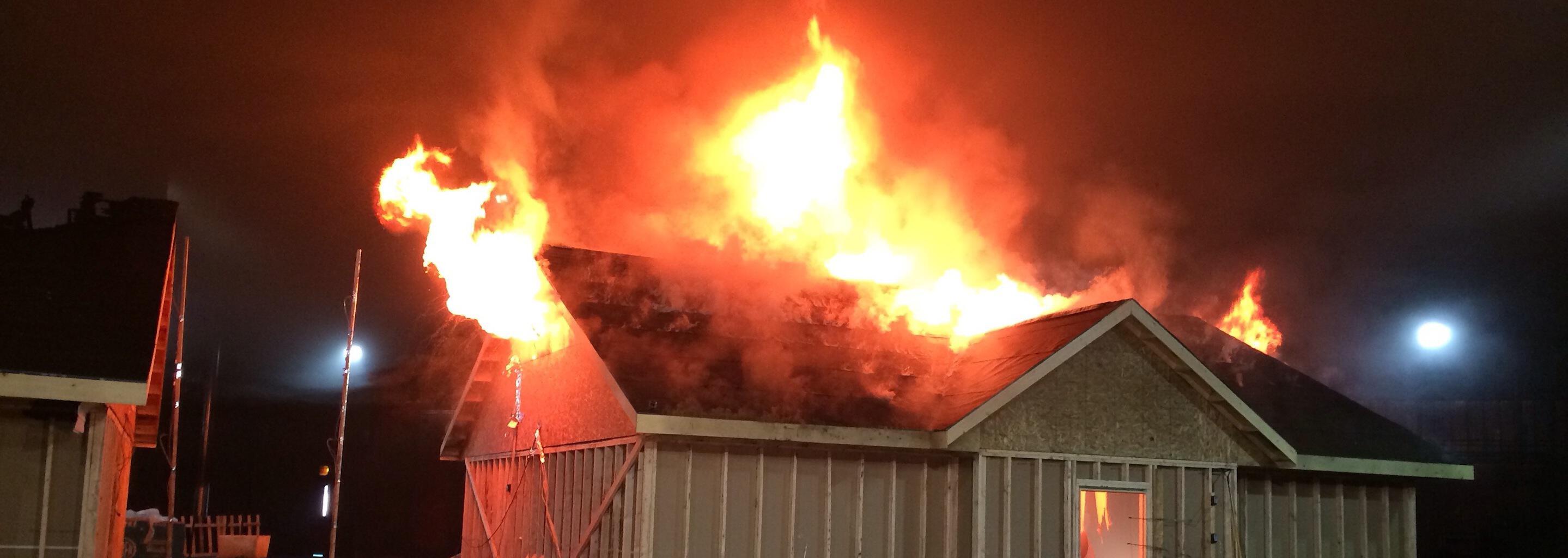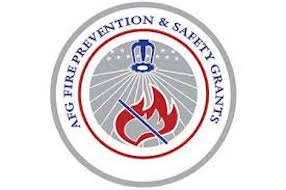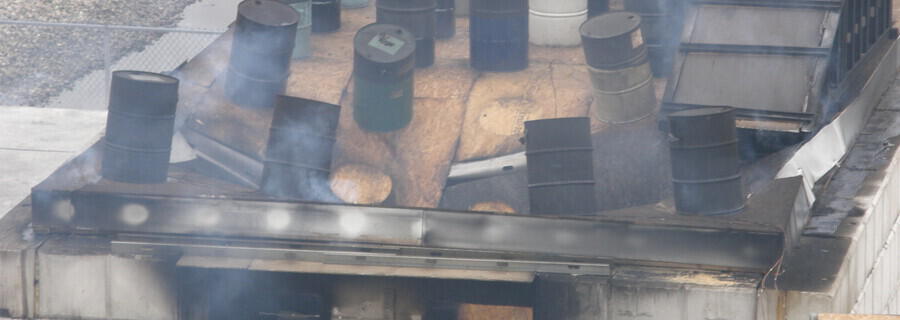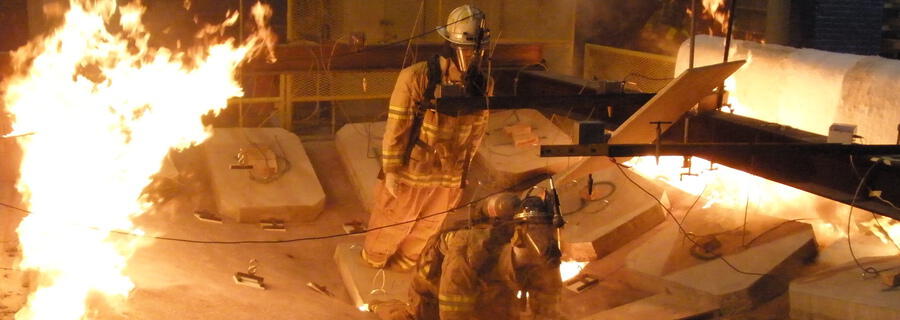Under an award from the the Federal Emergency Management Agency (FEMA) and Department of Homeland Security (DHS) Assistance to Firefighter Grant Program (EMW-2011-FP-00611), Underwriters Laboratories led a 2-year study to examine fire service attic fire mitigation tactics and the hazards posed to firefighter safety by the changing modern residential fire environment and construction practices.
The US Fire Administration estimates 10,000 residential building attic fires are reported to U.S. fire departments each year and cause an estimated 30 civilian deaths, 125 civilian injuries and $477 million in property loss. These attic fires are very challenging for the fire service to mitigate and have led to line of duty deaths and injuries. Further complicating attic fires, current building practices include new products to achieve better energy performance to meet newer code requirements with little understanding of fire performance or the impact on firefighter safety. This study provides the fire service with the science necessary to examine their standard operating procedures utilized during fires that start on the outside of the structure and during attic fires.
To evaluate the exterior fire hazards of various wall construction types, medium scale testing was performed on 8ft x 8ft wall sections looking at ignition, flame spread, peak heat release rate and exposure potential. The results of the medium scale testing was used to establish parameters for eave experiments to further evaluate flame spread along with increasing the understanding of the dynamics of how fires transition from exterior to attic fires. Following the eave experiments full scale attics were constructed and instrumented to evaluate the effectiveness of four fire service suppression tactics on attic fires. Each tactic was evaluated both with and without vertical ventilation or simulated attic burn through to understand the fire dynamics during attic fires. Finally field experiments were conducted to investigate the fire dynamics of knee wall fires and the effectiveness of current mitigation tactics for knee wall and half attic space fires.
Tactical Considerations
The results of the experiments were then examined with the fire service technical panel and utilized to develop 12 fire service tactical considerations for use in the mitigation of attic, knee wall and exterior fires. For more information on these tactical considerations download the full project report in the resources section above. These tactical considerations include:
- Increased use of plastics in exterior walls will change what you arrive to.
- If the fire starts on the outside, start fighting it from the outside.
- Learn to anticipate where and how an exterior fire will migrate to the interior.
- Attic fires are commonly ventilation limited fires.
- Closely time or limit vertical ventilation until water is in the attic.
- Plastic ridge vents can affect size-up and fire dynamics.
- Wetting sheathing with an eave attack slows attic fire growth.
- Attic construction affects hose stream penetration.
- Consider flowing up instead of down with a master stream.
- Knee wall fire dynamics.
- Apply water on a knee wall fire at the source and toward the direction of spread before committing to the attic.
- Interior operations on knee wall fires.




